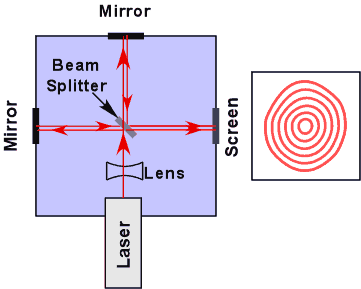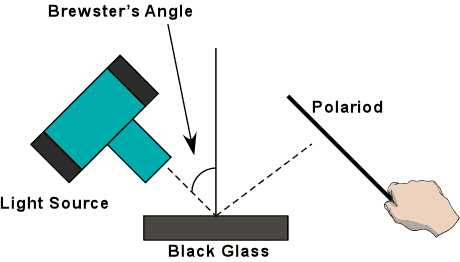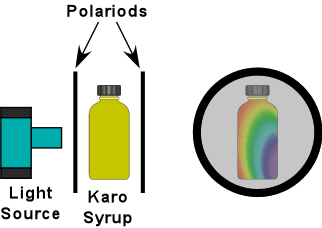| # | Title | Image | Description | Video |
| 1 | Single Slit and Laser |
Diffraction Through One Slit
|
Turn on the laser. The pattern appears on the wall. The slit widths are printed on the slide. To select a different slit, slide the holder sideways. We also have the Cornell slitfilm card, which includes a slit of gradually increasing width. |
Video 2 |
| 2 | Double Slits and Laser |
Interference From Two Sources
|
Turn on the laser. The pattern appears on the wall. The slit widths and spacings are printed on the slide. To select different slits, slide the holder sideways. We also have the Cornell slitfilm card, which includes double slits of increasing width and spacing. |
Video 2 |
| 3 | Number of Slits | Gratings |
Turn on the laser and place the slit slide in front of the beam so the beam hits one of the many slits on the slide. View the results of the interference pattern on the wall. The lights in the room may need to be darkened. |
Video 2 |
| 4 | Michelson Interferometer |
Interferometers
|
Turn on the laser. Read the initial position of the micrometer. Count the number of fringes while turning the micrometer slowly in one direction only. Read the final position. This can also be done with white light. |
Video |
| 5 | Polaroids on the Overhead |
Dichroic Polarization
|
You get two sheets of Polaroid and a pair of Polaroid sunglasses. Rotate one on the Polaroids or the sunglasses. |
Video 2 |
| 6 | Microwave Polarization |
Dichroic Polariztion
|
Hold a grid of parallel wires in a microwave beam and rotate the grid. |
|
| 7 | Brewster's Angle |
Polarization by Reflection
|
Light is reflected from a sheet of black glass onto the wall. Rotate a sheet of Polaroid in the path of the reflected light. We set the light at Brewster's Angle. Vary the incident angle by rotating the light. A metal triangle can be used to set the incident light back to Brewster's Angle. | |
| 8 | Three Polaroids |
Circular Polarization
|
Three sheets of Polaroids are provided with an overhead projector. |
Video 2 |
| 9 | Karo Syrup |
Circular Polarization
|
Place the Karo syrup between the disks. Place the light source behind the rear polarizer disk and turn the lamp on. Rotate the front disk and watch the syrup change colors. |
Video 2 |







